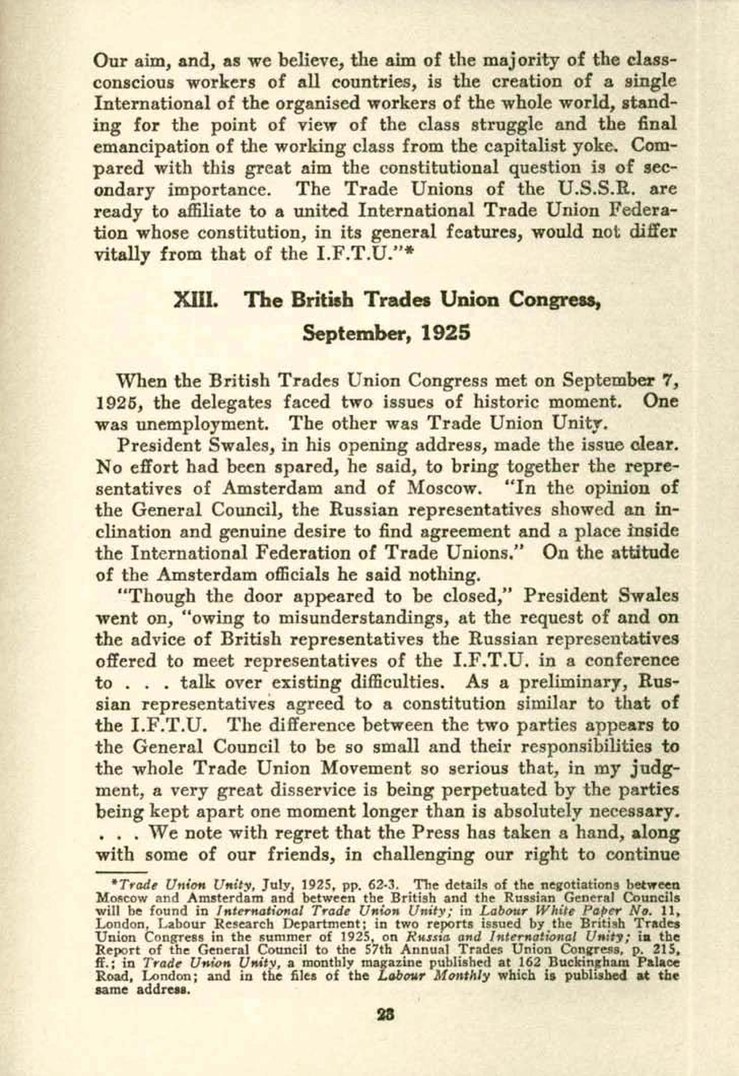Our aim, and, as we believe, the aim of the majority of the class-conscious workers of all countries, is the creation of a single International of the organised workers of the whole world, standing for the point of view of the class struggle and the final emancipation of the working class from the capitalist yoke. Compared with this great aim the constitutional question is of secondary importance. The Trade Unions of the U.S.S.R. are ready to affiliate to a united International Trade Union Federation whose constitution, in its general features, would not differ vitally from that of the I.F.T.U."[1]
XIII. The British Trades Union Congress,
September, 1925
When the British Trades Union Congress met on September 7, 1925, the delegates faced two issues of historic moment. One was unemployment. The other was Trade Union Unity.
President Swales, in his opening address, made the issue clear. No effort had been spared, he said, to bring together the representatives of Amsterdam and of Moscow. "In the opinion of the General Council, the Russian representatives showed an inclination and genuine desire to find agreement and a place inside the International Federation of Trade Unions." On the attitude of the Amsterdam officials he said nothing.
"Though the door appeared to be closed," President Swales went on, "owing to misunderstandings, at the request of and on the advice of British representatives the Russian representatives offered to meet representatives of the I.F.T.U. in a conference to … talk over existing difficulties. As a preliminary, Russian representatives agreed to a constitution similar to that of the I.F.T.U. The difference between the two parties appears to the General Council to be so small and their responsibilities to the whole Trade Union Movement so serious that, in my judgment, a very great disservice is being perpetuated by the parties being kept apart one moment longer than is absolutely necessary. … We note with regret that the Press has taken a hand, along with some of our friends, in challenging our right to continue
- ↑ Trade Union Unity, July, 1925, pp. 62–3. The details of the negotiations between Moscow and Amsterdam and between the British and the Russian General Councils will be found in International Trade Union Unity; in Labour White Paper No.11, London, Labour Research Department; in two reports issued by the British Trades Union Congress in the summer of 1925, on Russia and International Unity; in the Report of the General Council to the S7th Annual Trades Union Congress, p. 215, ff.; in Trade Union Unity, a monthly magazine published at 162 Buckingham Palace Road, London; and in the files of the Labour Monthly which is published at the same address.
23
